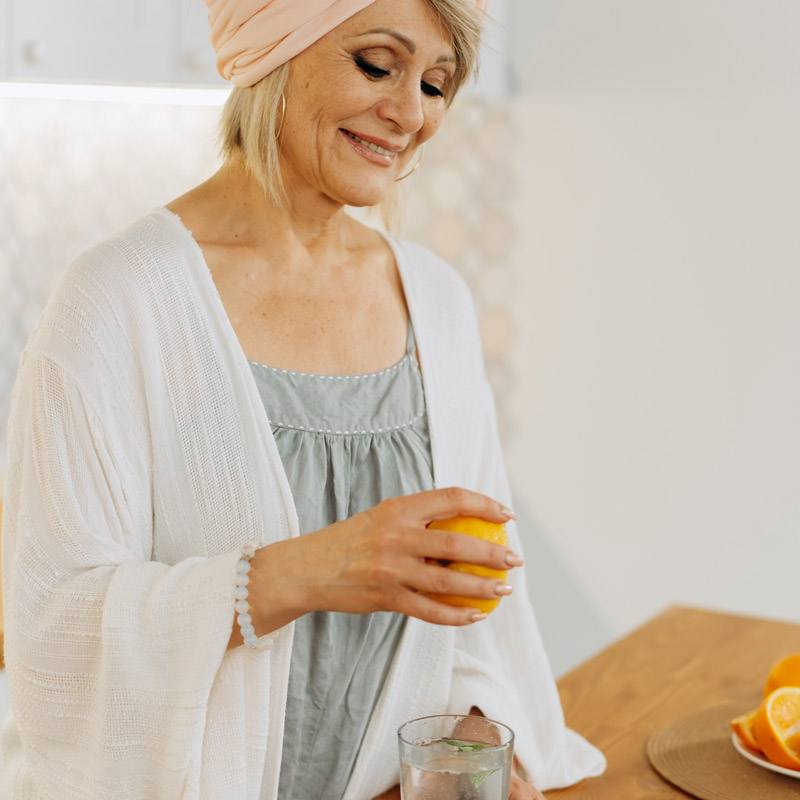I am guessing most of you have heard the word “Glycation” somewhere along the line, but do we know what it means?
When you eat, the body breaks down carbohydrates into sugars, like fructose and glucose. Your body then uses these sugars to fuel everything you do. But research has shown that excess sugar in your bloodstream can promote “glycation,” which in turn, ages the skin. Sometimes, particularly as we get older, when we consume too many sugary or high-glycaemic foods these sugars react with proteins and fats in an abnormal way, producing harmful molecules called “advanced glycation endproducts or AGE’s (appropriately named).” This process is called “glycation.”
We all know how bad sugar is for the body, but who would have thought it also had such a bad effect on our skin, especially for those of us who love sweet foods.
The more AGE’s we have in our body the faster we age.
Scientists have discovered this in studying diabetics. The significant thing here is blood sugar—the higher the level of glucose in the blood, the more AGE’s we have. Diabetics have a very difficult time controlling their blood sugar. Scientists have found that because of this, they tend to age faster than those without normal blood sugar readings.
A 2001 study showed that AGE’s also affected collagen and elastin. Collagen gives skin its firmness and elastin helps the skin bounce back after it is stretched.
If there is too much sugar in the body, protein molecules can cross-link with sugar molecules. Once this cross-linking process has occurred, the new sugar proteins are called advanced glycation end products (AGEs). The human body does not recognize AGEs as normal, and will produce antibodies that cause inflammation in the skin.
The British Journal of Dermatology reported that after the age of 35, glycation in the skin increases and continues to do so as we get older. Worse—when we’re exposed to UV rays, it accelerates glycation, further aging the skin.
Exposure to the sun without protection and also using chemical sunscreens (as I have talked about in another article) drastically increases AGE accumulation, resulting in wrinkle formation.
Other effects of AGE formation include:
- Uneven skin tone
- Pigmentation
- Age spots
- Dull, uneven skin tone
- Sagging skin
- Loss of collagen
- Inflammation
How to Reduce AGE’s and Slow Down the Aging Process
So who wants to look older than they really are? Not me!
So now we know that the more glucose we have in our bloodstream, the more likely we are to be producing AGEs and aging our skin, what steps can we take o to minimise AGE’s?
Fortunately, there’s a lot that we can do! Here are ten tips to help you keep your skin looking smooth and glowing even as you get older.
- Control blood sugar levels: If you’re diabetic, you already know this is key to your overall health, but now you know it can also be an anti-aging technique. Even if you’re not diabetic, though, blood sugar spikes can affect the condition of your skin. Try to maintain a steady level. How can you tell? By the energy you feel. Fuel your body with low-glycaemic foods and eat every three to four hours.
- Cut back on sugary items: Think twice about that sugar-filled muffin, slice or even fruit-flavoured yogurts. It’s not worth the extra wrinkles! Make your own sweet treats. You really do get used to reducing or cutting out sugar and after a while when you do have something like a shop-bought treat, you’ll find it too sweet!
- Choose low-glycaemic foods: Sugar is not the only cause of glycation. Many foods, like white bread, white rice, white potatoes, bananas and similar items foods that break down quickly in the body, spiking blood sugar levels. These are foods that rate high on the glycaemic index. Choose foods on the lower end—they take more time to break down, helping to stabilize blood sugar levels and keep you satisfied. Look for lean meats, eggs, most vegetables, nuts and seeds, rolled oats, quinoa, Greek yogurt, lean meats and fruits like berries, plums, peaches and melon.
- Avoid barbequing your food: This can actually create AGEs in the food—before you even consume it! Whenever you see that blackened meat look, you’re looking at AGEs. If you eat them, you’re adding to what’s already in your body. Try enjoying food not so well done, and cook meats slowly on a low heat.
- Protect your skin: UV exposure increases the formation of AGEs. Always protect your skin from the sun, using a physical chemical sunscreen may do more harm than good.
- Maintain a healthy weight: Research has shown that excessive weight or waist size can increase the formation of AGEs.
- Lift weights: As we age, we naturally lose muscle. Muscles consume glucose, so the more muscle you have, the more glucose your body will take up. A reduction in muscle mass can increase blood sugar levels, leading to increased AGEs. Regular weight training can help counteract this affect.
- Boost your antioxidant intake: Fruits like dark berries, pecans, whole grains, fish, orange vegies and green tea have powerful antioxidants that help protect cells from glycation. Getting a regular supply of these in your diet helps to save your skin from the effects of AGEs. I make my own chocolate with cacao, coconut oil, crushed nuts, vanilla essence and a tablespoon or two of pure maple syrup. Delicious!
- Limit your alcohol intake: Researchers have found that alcohol enhances glycation. Sad, but true!








